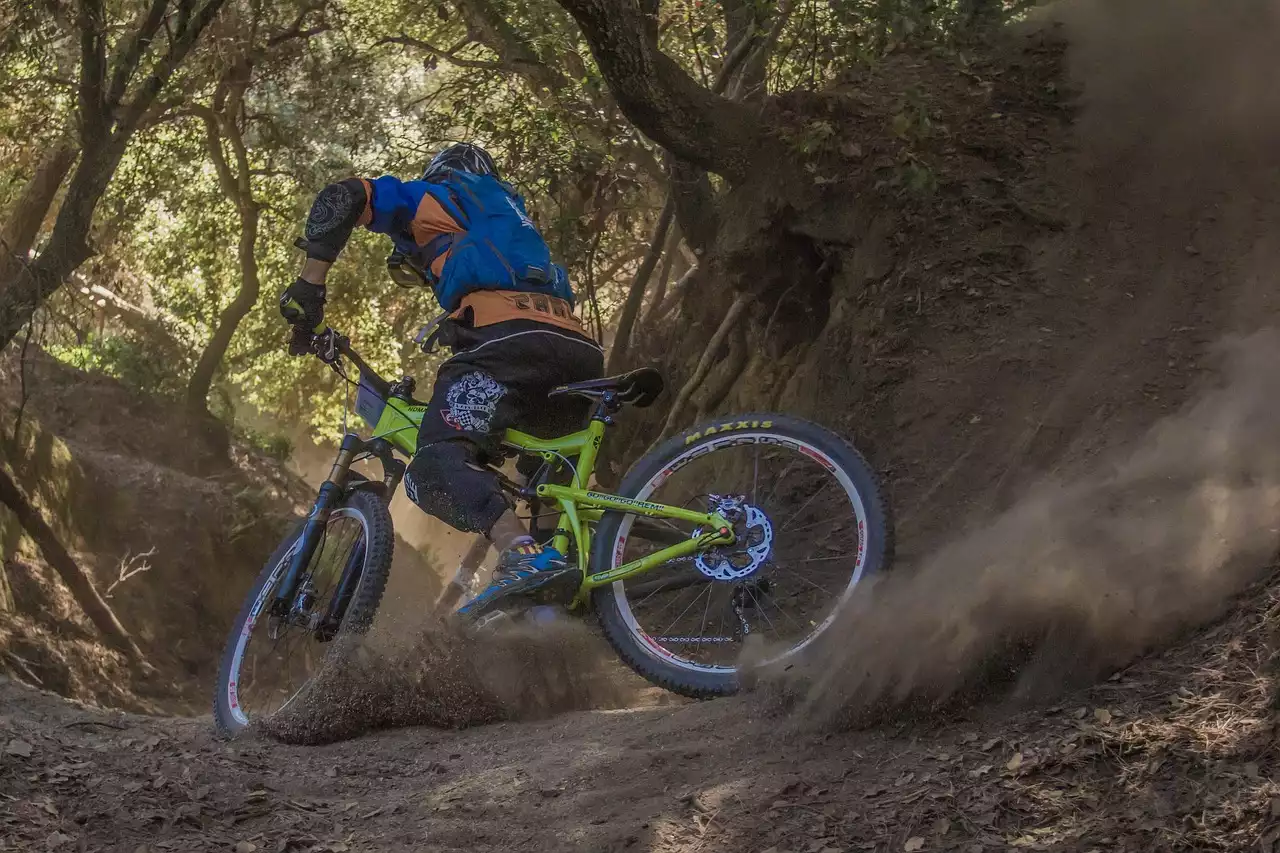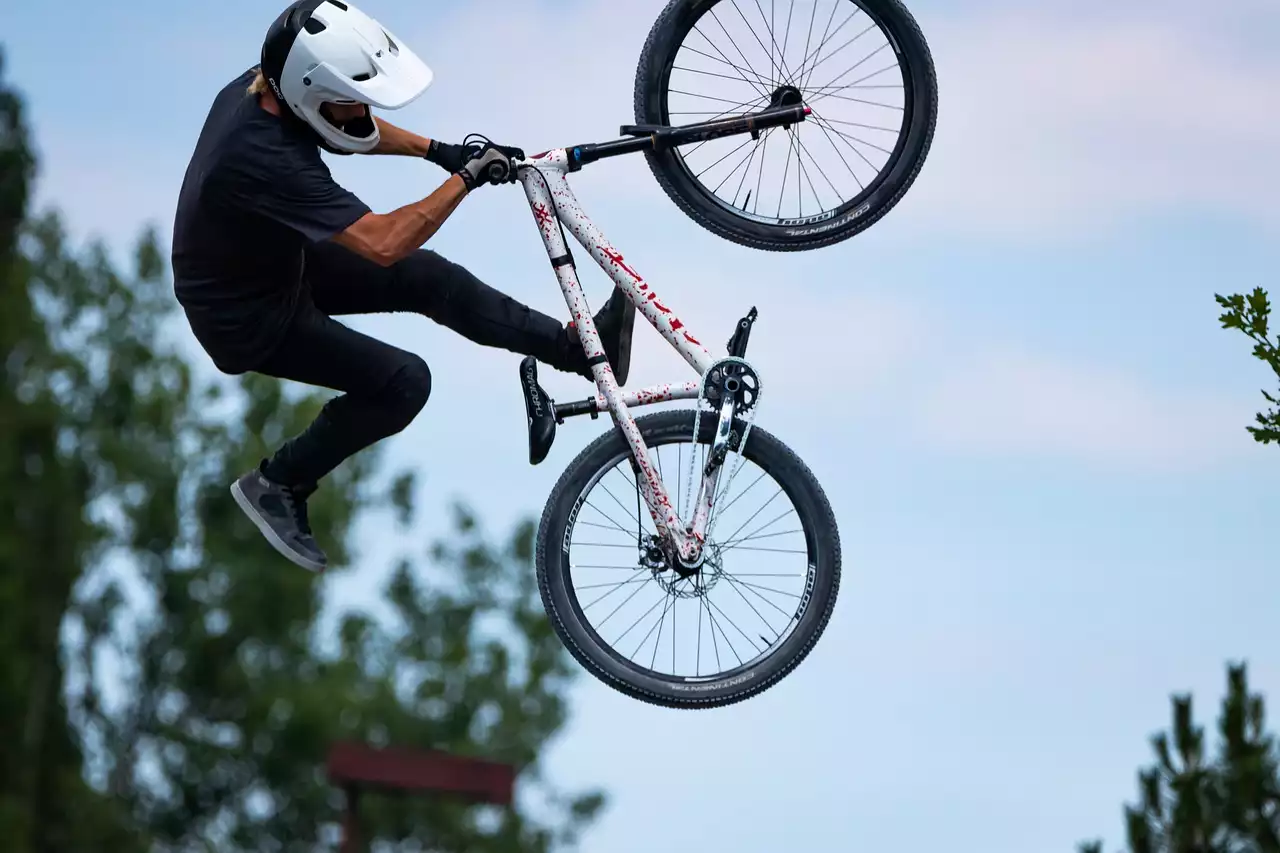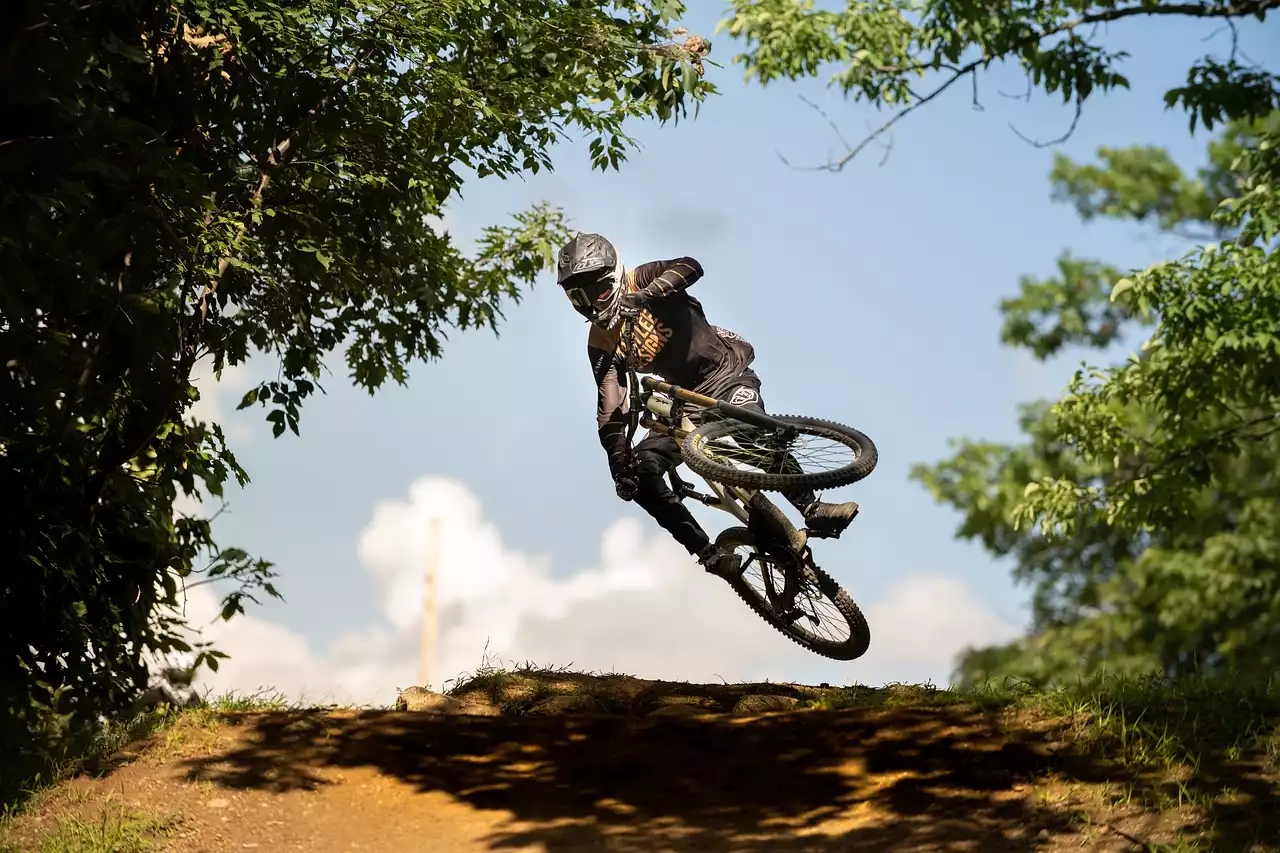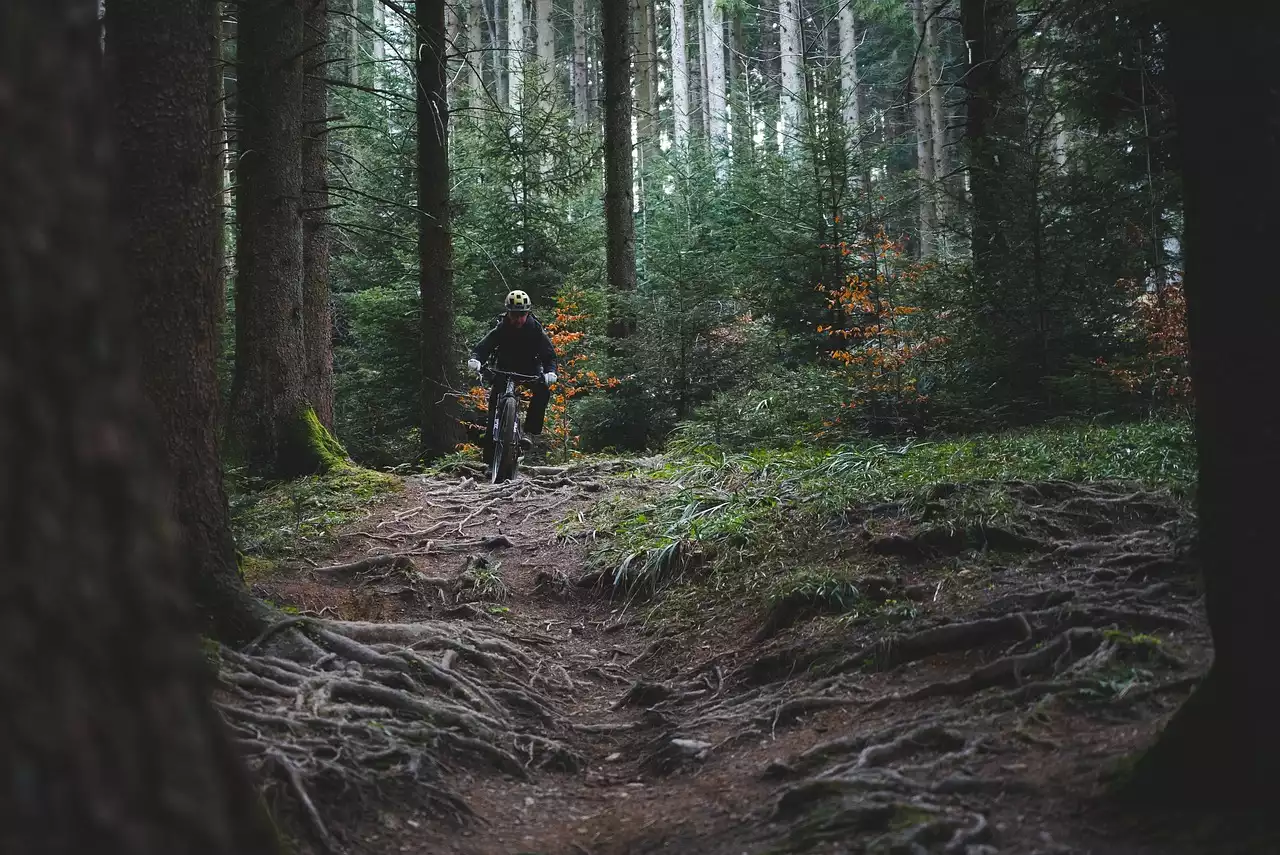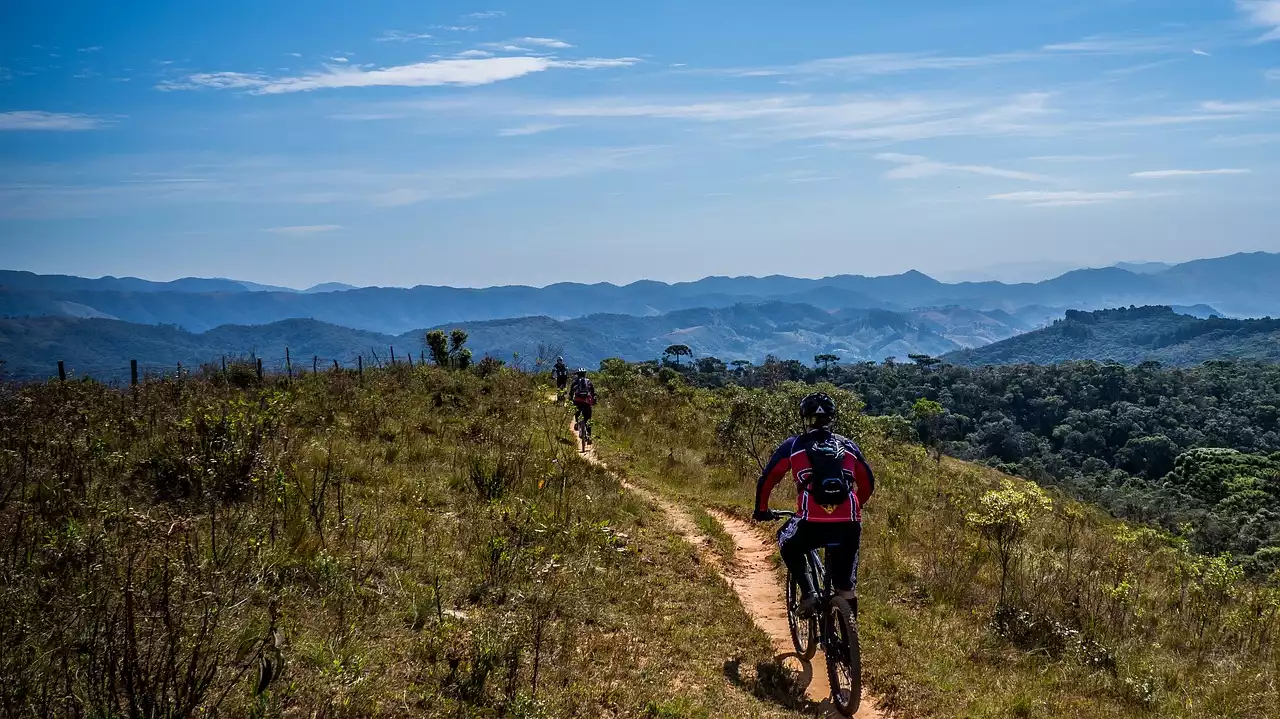Types of mountain bikes
Mountain bikes come in different shapes and sizes, each designed for a specific purpose. When choosing a mountain bike, it's important to consider your riding style, skill level, and the type of terrain you'll be riding on. Here are the most common types of mountain bikes:
Hardtail mountain bikes
Hardtail mountain bikes have a rigid frame and suspension only in the front fork. They are lightweight and efficient, making them ideal for cross-country riding and climbing. They are also more affordable than full suspension bikes, making them a popular choice for beginners. However, they can be less comfortable on rough terrain and may require more skill to ride.
Full suspension mountain bikes
Full suspension mountain bikes have suspension in both the front and rear of the bike, providing more comfort and control on rough terrain. They are ideal for downhill riding and technical trails, as they absorb shock and help maintain traction. However, they are heavier and more expensive than hardtail bikes, and may require more maintenance.
Fat tire mountain bikes
Fat tire mountain bikes have oversized tires that provide extra traction and stability on soft and loose terrain, such as sand or snow. They are ideal for exploring off-road trails and can handle rough terrain with ease. However, they are heavier and slower than other types of mountain bikes, and may require more effort to ride.
Choosing the right mountain bike for your needs
Choosing the right mountain bike can make all the difference in your riding experience. Here are some factors to consider when selecting a mountain bike:
Riding style
Consider your riding style and the type of terrain you'll be riding on. If you'll be doing mostly cross-country riding, a hardtail bike may be a good choice. If you'll be doing more technical riding or downhill riding, a full suspension bike may be a better option.
Skill level
Consider your skill level and the level of challenge you're comfortable with. If you're a beginner, a hardtail bike may be a good choice to start with. If you're more experienced, a full suspension bike may provide the performance you need for more challenging trails.
Budget
Consider your budget and how much you're willing to spend. Hardtail bikes are generally more affordable than full suspension bikes, but may not provide the same level of comfort and control on rough terrain.
Types of mountain bike terrain
Mountain bike terrain can vary widely, from smooth and flowy to rocky and technical. Here are the most common types of mountain bike terrain:
Cross-country
Cross-country terrain consists of smooth and rolling trails, with some small obstacles and climbs. It's ideal for hardtail mountain bikes and is a good place for beginners to start.
All-mountain
All-mountain terrain consists of more technical and challenging trails, with steep climbs and descents, rocks, and roots. It's ideal for full suspension mountain bikes and requires more skill and experience.
Downhill
Downhill terrain consists of steep and technical trails, with large drops, jumps, and obstacles. It's ideal for full suspension mountain bikes and requires advanced skills and experience.
Trail riding tips for beginners
If you're new to mountain biking, here are some tips to help you get started:
Start small
Begin with easy trails and gradually work your way up to more challenging terrain. This will help you build confidence and skills.
Keep your weight centered
Keep your weight centered over the bike, with your elbows and knees bent. This will help absorb shock and maintain control on rough terrain.
Look ahead
Look ahead on the trail, not down at your front wheel. This will help you anticipate obstacles and maintain your balance.
Advanced trail riding techniques
If you're an experienced rider looking to take things to the next level, here are some advanced trail riding techniques to try:
Pumping
Pumping involves using your body to generate momentum on the trail, without pedaling. It's a useful technique for gaining speed and maintaining momentum on flat or rolling terrain.
Jumping
Jumping involves launching your bike off a jump or obstacle and landing safely on the other side. It requires skill and practice, but can be a thrilling way to navigate technical terrain.
Cornering
Cornering involves leaning your bike into a turn and maintaining your speed and balance. It requires proper body positioning and braking technique.
Mountain bike maintenance and care
Proper maintenance and care can help keep your mountain bike in top condition and extend its lifespan. Here are some tips for maintaining your mountain bike:
Clean your bike regularly
Clean your bike after each ride to remove dirt, mud, and debris. This will help prevent wear and tear and keep your bike running smoothly.
Check your tire pressure
Check your tire pressure before each ride to ensure optimal performance and prevent flats.
Lubricate your chain
Lubricate your chain regularly to prevent rust and improve shifting.
Essential gear for mountain biking
Mountain biking requires specialized gear to keep you safe and comfortable on the trail. Here are some essential items to consider:
Helmet
A helmet is essential for protecting your head in case of a fall. Choose a helmet that fits properly and meets safety standards.
Gloves
Gloves provide grip and cushioning on the handlebars, and can help prevent blisters and hand fatigue.
Shoes
Mountain bike shoes provide traction and support on the pedals, and can help improve your performance and control.
Safety precautions and considerations for mountain biking
Mountain biking can be a fun and exhilarating activity, but it also carries risks. Here are some safety precautions and considerations to keep in mind:
Ride with a buddy
Riding with a buddy can provide support and assistance in case of an emergency.
Carry a first aid kit
Carry a first aid kit with you on the trail, including bandages, gauze, antiseptic, and other essentials.
Know your limits
Don't push yourself beyond your limits. Know when to take a break, and don't attempt trails that are beyond your skill level.
Respect the trail
Respect the environment and other trail users. Stay on designated trails and don't disturb wildlife or vegetation.
Mountain biking is an exciting and challenging activity that can provide a lifetime of enjoyment. By choosing the right mountain bike, understanding the types of terrain, and following these tips and guidelines, you can ride the trails with confidence and achieve your goals. So get out there, explore new trails, and enjoy the ride!
